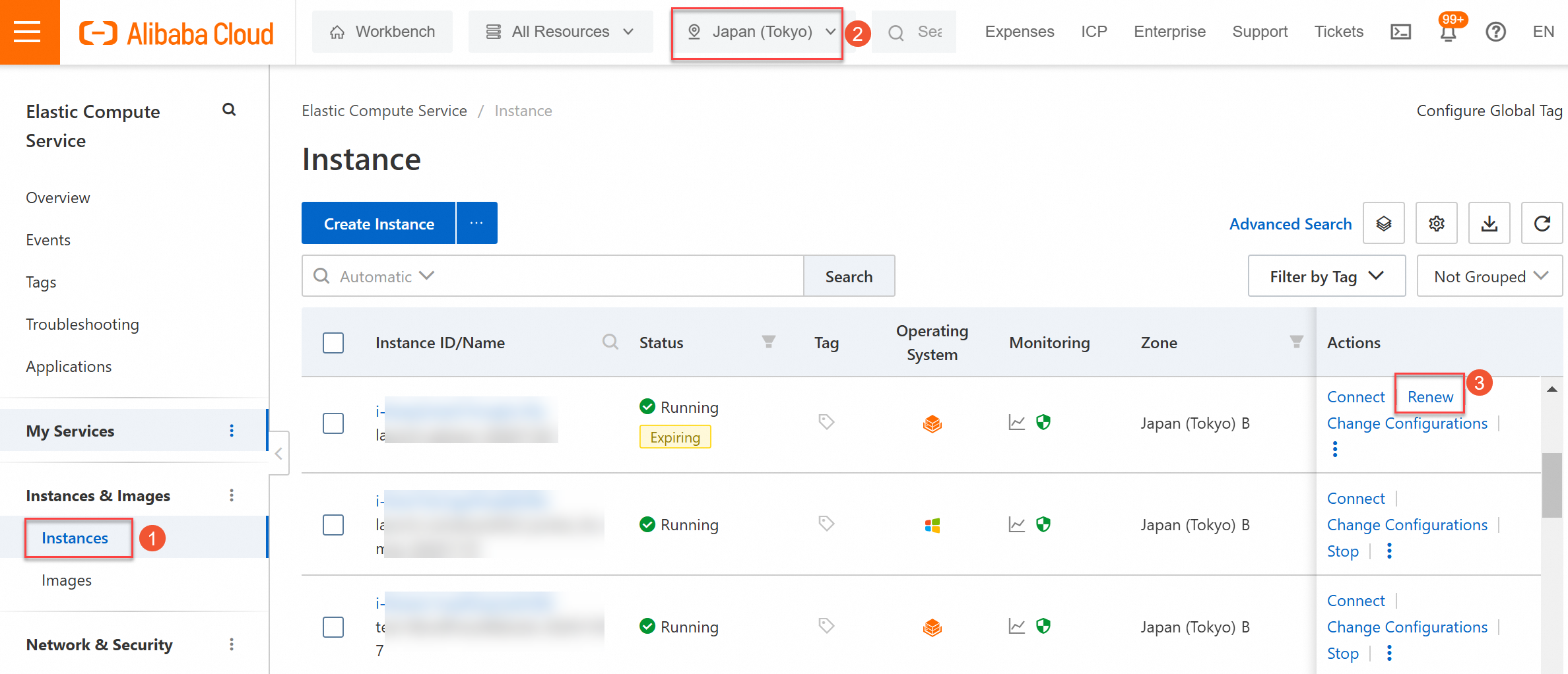You can manually renew a subscription Elastic Compute Service (ECS) instance to extend its service duration anytime before the instance is automatically released due to expiration. This topic describes how to renew a subscription instance.
You can use different methods to renew a subscription instance in various phases, such as the creation, expiration, and release phases, during the instance lifecycle.

Manual renewal
(Recommended) Manually renew instances in the ECS console
Renew a single instance
Log on to the ECS console.
In the left-side navigation pane, choose Instances & Images > Instances. In the top navigation bar, select a region.
On the instance list page, find the instance that you want to renew. Click Renew in the Actions column to access the renew page and then complete the payment.

Batch renew multiple instances that reside in the same region
Log on to the ECS console.
In the left-side navigation pane, choose Instances & Images > Instances. In the top navigation bar, select a region.
On the Instances page, select the instances that you want to renew. In the lower part of the page, click More > Fees > Renew.

On the Renew page, follow the on-screen instructions to configure the Renewal Duration parameter and then complete the payment.
Batch renew multiple instances that reside in different regions
Go to the Renewal page, set the Instances parameter to ECS (Subscription) - International Site.
Select one or more instances under the Manual tab and click Batch Renew in the lower part of the tab. Follow the on-screen instructions to configure the Renewal Duration parameter and then complete the payment.
You cannot batch renew ECS instances and other Alibaba Cloud services at the same time.
Renew instances by calling API operations
You can call API operations to query the expiration time of instances and renew instances, such as Python SDK. For more information, see Renew an ECS instance.
Renewal methods
Renewal method | Time limit | Scenario | New billing cycle |
From the creation of an instance until 14 days after the instance expires (T+14) | The instance is renewed and the configurations of the instance are not changed. The instance is automatically renewed before the instance expires. This prevents the instance from being accidentally released and affecting your business. | After the instance is automatically renewed, the new billing cycle starts from the original expiration date. | |
From 15 days before an instance expires (T-15) until the instance is automatically released | The instance is renewed and the instance configurations, such as the instance type and bandwidth, are downgraded. You can downgrade the configurations of an instance, such as the instance type and public bandwidth, to meet your business requirements and reduce instance costs for the next billing cycle. |
| |
Synchronization of the expiration dates of subscription instances | Before instances expire | If you have multiple subscription instances that expire on different dates, you can synchronize the expiration dates to the same day of each month to simplify management and renewal and ensure business continuity. | The new billing cycle starts from the renewal date. |
Reference
You can call the DescribeRenewalPrice API operation to query the renewal price of a subscription ECS instance.